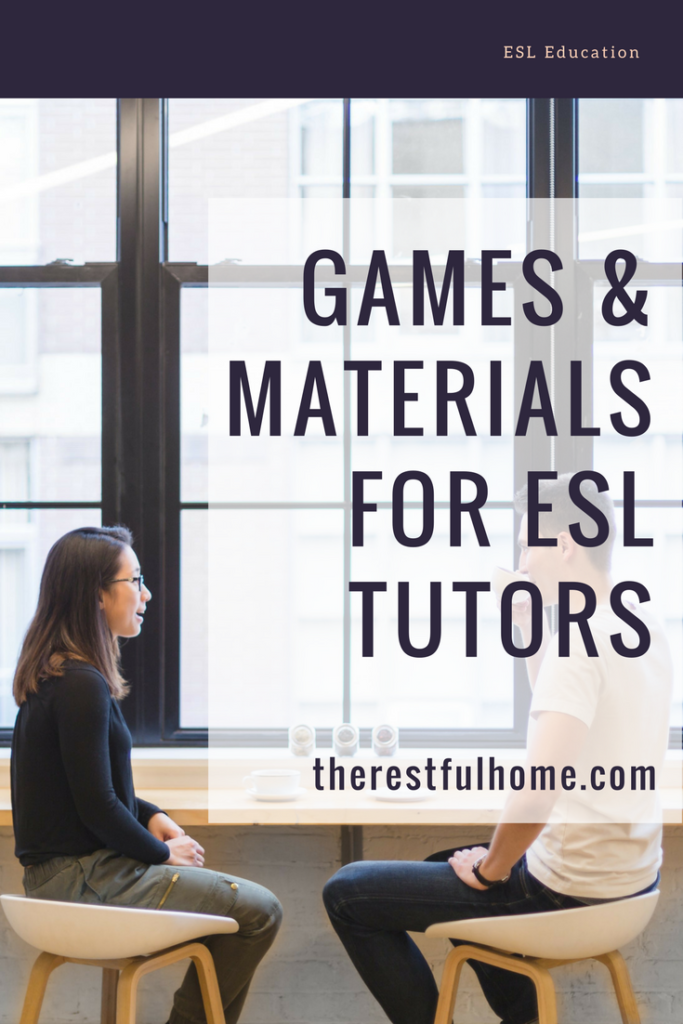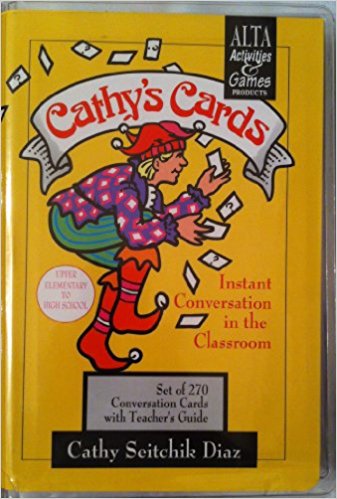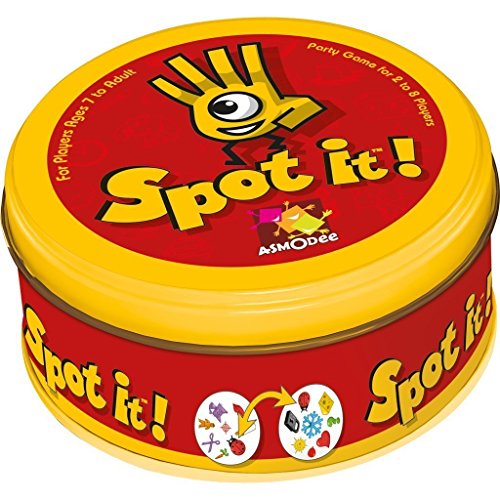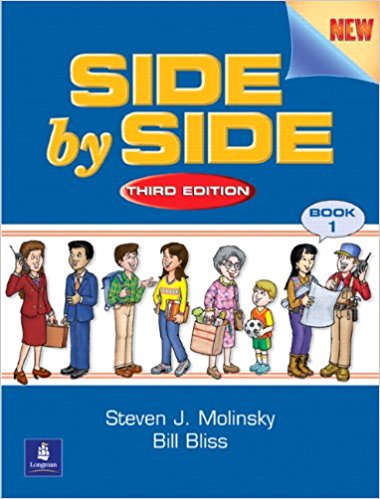
Games and Materials for ESL Tutors
-
Cathy’s Conversation Cards

These cards with topics for conversation are perfect for speaking practice, especially with intermediate-to-advanced students. Questions range from job interview practice to “what if” questions, and the cards give you a quick help when you’re stuck in a slow conversation. The cards haven’t been released in a while, so you may have to dig to find them. (Unless, of course, you buy them from a 3rd party seller on Amazon.) Another option is 50 Conversation Classes, which adds activities to questions.
-
Spot It
Sounds silly? Spot It is a silly game, in which you play a sort of “I Spy” with the cards, trying to find the same picture in each card laid out. I’ve found it to be an outstanding way to teach beginners some English vocabulary words in a totally nonthreatening way. And it’s perfect for ESL tutors looking for some relaxed playtime in the middle of a tutoring session.

-
Oxford Picture Dictionary
It’s a great idea to have one of these picture dictionaries on hand if you’re planning to get started tutoring. Don’t want to buy one just yet? Consider making labels for things yourself, drawing lots of pictures on a whiteboard or piece of paper, or having a scavenger hunt. Which reminds me…
-
Store Scavenger Hunt
If you’re unofficially tutoring someone, all you have to do for this is coordinate your shopping times. But have your student help you shop for the things on your list. If he/she has written his own list in his native language, go along to see what he’s buying and have him stop to write down the word in English next to the other word on the list. This is a good way to learn categories (like “dairy” or “deli”) and also to share cultures, as you compare the different kinds of ingredients you tend to buy.
-
Family Tree
Introduce your family by bringing along pictures to your tutoring session. Draw a family tree with names and titles (Susan – aunt; Ben – cousin) and ask your student to do the same. ESL tutors become more than just teachers to their students–we often become friends.
-
Textbooks

I am not normally a huge fan of textbooks. My own favorite teachers recommend that if you’re teaching, you use them merely as a guide for what grammar/topics to work on, not as the content of your classroom/tutoring activities. However, it can be helpful to have that guide, even when you’re ESL tutors, not classroom teachers. A couple of the textbooks I’ve used in the past for both teaching and tutoring have included the:
—Side by Side series, which are small workbooks with some excellent games/activities.
—Future series, which has great worksheets, audio CDs, and tests if students want to have their own book to take home and study.
Make sure you’ve assessed your student’s level before you decide which level of textbook to buy. A little help on the levels:
Generally, 1 is for beginners who can read and write some, although they understand very little; 2 is for advanced beginners; 3 is for intermediate students; 4 is for advanced intermediate (these students can have a fairly high-level conversation); 5, if it exists in the curriculum, would be advanced–by this time, students don’t often need a textbook “just for ESL students.” -
Library Field Trip
A trip to the library can teach so many things. To get a library card, one usually needs to present proof of residence such as a utility bill–so the student learns about utility bills or whatever else is needed to prove residence. Children’s books are ideal even for an advanced intermediate student. Language-teaching resources are often available online (using your library card number to unlock access). Navigating the library, the student learns about audio/video versus printed material. Due dates may be a new concept; drop boxes will probably be a relief. Before you go to the library, if you have a beginner for a student, you may want to take time to coach her through the conversation she will soon have with the librarian. (I used to go to the library ahead of time and grab all the application forms for my students. I would also warn the librarians when I was about to bring 30 ESL students to them at once, which they definitely appreciated. Obviously, this would be unnecessary with only 1-3 students.)
-
Cook Together!
I think the shared experience of cooking forms such a bond! It’s also a great way to learn a language. I learned so much Spanish helping make tortillas in Honduras, or gallo pinto in Costa Rica. Even if this isn’t an option because you’re not meeting in your home, you can bring a recipe and ingredients to the classroom. (I used to do that, along with bringing chocolate chip cookies to sample.)
Of course, there are dozens of websites you can go to for help as ESL tutors. I listed many of them in my article for adoptive parents teaching ESL. And this list is just a start on the many activities you can try. Think outside the box: do normal things you would do with your friends, like going to the mall or having a picnic. Use those activities to communicate the language whenever possible. That’s how all children learn, and that’s how we adults learn a language, as well.
Any ideas for fellow ESL tutors that you’d like to share?
Call it ESOL, TESOL (if you’re abroad), or whatever you like. I’d love to hear from you!
